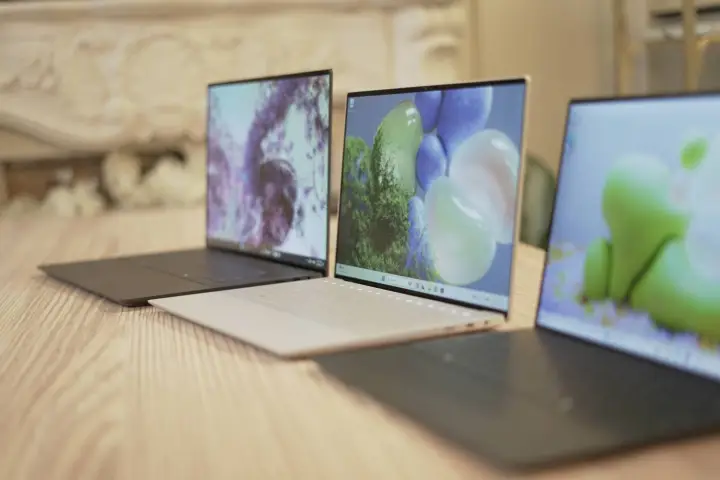
Is there a Windows laptop that can truly take down the MacBook Air? I’m always on the hunt for something that fits the bill.
The modern Dell XPS 13 may be a controversial laptop, but its gorgeous aesthetics and compact size make it a prime candidate to take down the MacBook Air. It’s priced quite close to the latest M3 model too.
The introduction of both Intel Lunar Lake and Snapdragon X Elite options for the XPS 13, battery life has improved significantly too. It’s a solid matchup, even if the MacBook Air M3 has a couple of one-ups that still make it the better overall choice.
Specs and configurations
| Dell XPS 13 | Apple MacBook Air | |
| Dimensions | 11.62 inches x 7.84 inches x 0.60 inches | 11.97 inches x 8.46 inches x 0.44 inches |
| Weight | 2.6 pounds | 2.7 pounds |
| Processor | Qualcomm Snapdragon X Elite X1E-80-100 (9345) Intel Core Ultra 5 226V (9350) Intel Core Ultra 7 256V (9350) Intel Core Ultra 7 258V (9350) Intel Core Ultra 7 268V (9350) Intel Core Ultra 9 288V (9350) |
Apple M3 (8-core) |
| Graphics | Qualcomm Adreno (9345) Intel Arc 130V (9350) Intel Arc 140V (9350 |
8 GPU cores 10 GPU cores |
| RAM | 16GB 32GB 64GB (9345) |
16GB 24GB |
| Display | 13.4-inch FHD+ (1920 x 1200) IPS non-touch 13.4-inch 2.8K (2880 x 1800) OLED touch |
13.6-inch 16:10 Liquid Retina IPS 2560 x 1664 |
| Storage | 512GB SSD 1TB SSD 2TB SSD 4TB SSD (9350) |
256GB SSD 512GB SSD 1TB SSD 2TB SSD |
| Touch | Optional | No |
| Ports | 2 x USB4 (9345) 2 x USB-C with Thunderbolt 4 (9350) |
2 x USB-C with Thunderbolt 4 1 x 3.5mm audio jack |
| Wireless | Wi-Fi 7 and Bluetooth 5.4 | Wi-Fi 6 and Bluetooth 5.3 |
| Webcam | 1080p with IR camera for Windows Hello | 1080p |
| Operating system | Windows 11 on Arm (9345) Windows 11 (9350) |
MacOS Sonoma |
| Battery | 55 watt-hours | 52.6 watt-hour |
| Price | $1,200+ (9345) $1,400+ (9350) |
|
| Rating | 3.5 out of 5 stars | 4 out of 5 stars |
The Dell XPS 13 comes with three different chip options: the Qualcomm Snapdragon X Elite model (9345), the Intel Core Ultra Series 2 (9350), and the older Intel Core Ultra Series 1 (9340). Dell prices them very similarly to the MacBook Air.
The XPS 13 9345 is the less expensive model, starting at $1,200 for a Qualcomm Snapdragon X Elite chipset, 16GB of RAM, a 512GB SSD, and a 13.4-inch FHD+ IPS display. Upgrading to 32GB of RAM and a 1TB SSD is a $300 uncharge, and the most expensive version with a 2.8K OLED display is $1,800. The high-end Intel model, the XPS 13 9350, starts at $1,400 for an Intel Core Ultra 7 256V, 16GB of RAM, a 512GB SSD, and a 13.4-inch FHD+ IPS display, and upgrading to 32GB and 1TB is an extra $300. The most expensive model switches to a 2.8K OLED display and comes in at $2,000.
The MacBook Air M3 base model at $1,099 for an 8-core CPU/8-core GPU M3 chipset, 16GB of RAM, and a 256GB SSD. All MacBook Air configurations use the same 13.6-inch 2560 x 1664 IPS display. With an 8-core CPU/10-core GPU M3, 16GB of RAM, and a 512GB SSD, the MacBook Air M3 costs $1,299. Fully configured, it’s $2,099 with 24GB of RAM and a 2TB SSD.
Both the MacBook Air M2 and Intel Core Ultra Series 1 Dell XPS 13 are both priced a bit lower, matched at $999 — at least, when not on sale.
You can get a MacBook Air M3 for less than the XPS 13 in its base model, and Dell isn’t offering the 2TB or larger storage options. So, you can configure the MacBook Air M3 with more storage for a bit more money. Note that you can still buy the MacBook Air M2 for $100 less across the board.
Design

The XPS 13 looks a lot like the previous model on the outside, as do all the new XPS machines, with Platinum or Graphite CNC-machined aluminum on the lid and bottom chassis and anodized chrome along the sides. On the inside is an edge-to-edge keyboard with zero key spacing, a glass palm rest and hidden touchpad, and a row of LED function keys. These are controversial features that some users will love, and some will hate, but they combine with the thinnest display bezels on a laptop to give a thoroughly modern appearance.
The MacBook Air M3 is a more conservative design outside and in, with CNC-machined aluminum all around in a choice of four colors — Midnight, Starlight, Space Gray, and Silver. The edges are perfectly straight, while the keyboard and touchpad are more traditional designs; the usual fastidious Apple design touches make for an elegant look.
Both laptops are attractive, and it comes down to user preference as to which is better aesthetically. The MacBook Air has a solid chassis with a little bending in the lid, while the XPS 13 is an entirely rigid machine. The two machines weigh almost the same, and the MacBook Air feels denser than the XPS 13, given its incredibly thin 0.44 inches compared to the XPS 13 at 0.60 inches.
The XPS 13 has thinner display bezels than the MacBook Air, which, when combined with a slightly smaller display, makes the Dell a smaller laptop in width and depth. The one controversial design feature of the MacBook Air is the display notch that houses the webcam and microphones.

The MacBook Air enjoys the excellent Apple Magic Keyboard, with large keycaps and plentiful key spacing, which, combined with the light, snappy switches, make for one of the most comfortable keyboards around. The XPS 13’s edge-to-edge keyboard provides a feel that’s almost as good as the MacBook Air’s, once a user is past a short learning curve. More important, the XPS 13’s LED function keys have no physical feel whatsoever, meaning you have to look every time you want to enable a function. It’s not a good design.
The MacBook Air’s Force Touch touchpad is excellent, as always, with the useful Force Click feature. The XPS 13’s seamless touchpad is also a haptic version, which is good but not great. It’s slick, but some complain that the invisible edges are more troublesome than they’re worth.
Both laptops have limited connectivity, with the same two Thunderbolt 4 ports. However, the MacBook Air has a 3.5mm audio jack, which the XPS 13 lacks, and it uses Apple’s MagSafe 3 power connector, while the XPS 13 uses one of the Thunderbolt 4 ports for charging. That ultimately makes the MacBook Air’s connectivity more expansive. The XPS 13 has the more cutting-edge wireless connectivity, though, with Wi-Fi 7 and Bluetooth 5.4.
Finally, both laptops have 1080p webcams, while the XPS 13 adds an infrared camera for Windows 11 Hello facial recognition. The MacBook Air has Apple’s TouchID sensor embedded in the power button, while the XPS 13 also has a fingerprint reader in the same location.
Performance
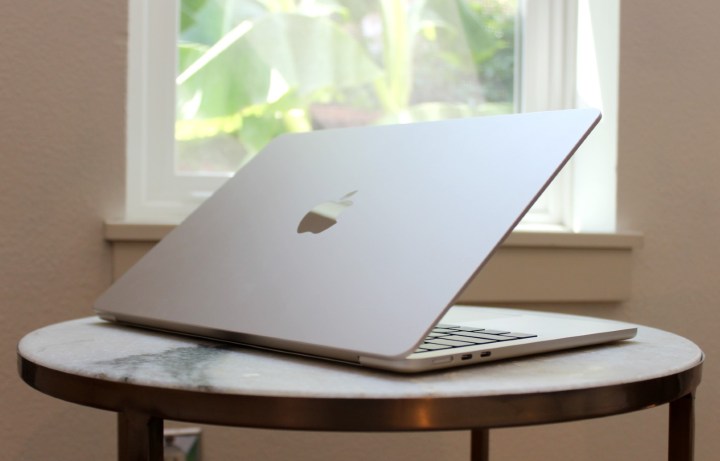
The XPS 13 uses a choice of two chipsets, namely the Qualcomm Snapdragon X Elite X1P-80-100 or the Intel Lunar Lake ranging from the Core Ultra 5 226V to the Core Ultra 9 288V. The Qualcomm chipset is based on a 12-core ARM architecture with Adreno graphics, and it aims to be both fast and efficient. The Intel Lunar Lake chipsets are all 8-core architectures running at various clock speeds and sporting the newest Intel Arc integrated graphics, and they’re primarily meant to improve Intel’s efficiency.
The MacBook Air M3 uses the Apple M2 chipset, with eight CPU cores and either eight or 10 GPU cores. Apple’s GPU optimizations will make the MacBook Air M3 slightly faster in creative applications.
Both laptops, though, will meet the needs of most users equally well. Each laptop includes a Neural Processing Unit (NPU), with the XPS 13 models having faster versions than Apple’s Neural Engine. The upcoming M4, arriving in early 2025, will feature a faster Neural Engine. All of these laptops have various AI features that will run more efficiently on-device using their NPUs.
| Geekbench 6 (single/multi) |
Cinebench R24 (single/multi/battery) |
Handbrake | 3DMark Wild Life Extreme |
|
| Dell XPS 13 (9345) (Snapdragon X Elite X1P-80-100) |
2,805 / 14,511 | 121 / 921 | N/A | 6,397 |
| Dell XPS 13 (9350) (Core Ultra 7 258V / Intel Arc 140V) |
2,738 / 10,734 | 112 / 452 | 113 | 3,240 |
| Apple MacBook Air M3 (M3 8/10) |
3,102 / 12,078 | 141 / 601 | 109 | 8,098 |
Display and audio
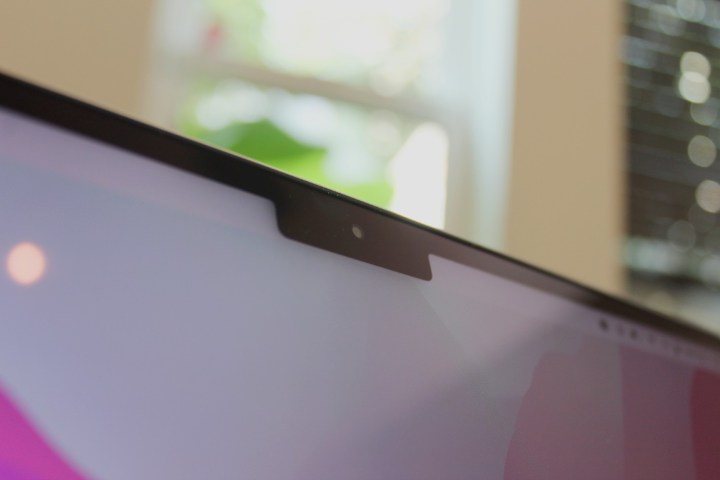
The XPS 13 has two 13.4-inch 16:10 display options, including FHD+ (1920 x 1200) IPS and 3K (2880 x 1800) OLED. Each display runs at up to 120Hz. The MacBook Air has a 13.6-inch 16:10 IPS display at 2560 x 1664 running at 60Hz.
We reviewed the two XPS 13 models with Dell’s low-power IPS display. The MacBook Air M3’s display has wider and more accurate colors while the XPS 13’s display has higher contrast. Dell’s 2.8K OLED display will offer even better colors and inky blacks, at the cost of lower battery life.
| Dell XPS 13 (IPS) |
Apple MacBook Air M3 (IPS) |
|
| Brightness (nits) |
507 | 495 |
| AdobeRGB gamut | 74% | 87% |
| sRGB gamut | 100% | 100% |
| DCI-P3 gamut | 75% | 99% |
| Accuracy (DeltaE, lower is better) |
1.41 | 1.24 |
| Contrast | 1,740:1 | 1,480:1 |
The MacBook has four-speaker audio that provides excellent sound, with plenty of volume, clear mids and highs, and a touch of bass. The XPS 13 also has four speakers, including two woofers and two tweeters. Overall, the MacBook Air’s audio is deeper with more bass. Once again, Apple includes a 3.5mm audio jack where Dell drops it on the 13-inch model, and to take it a step further, the MacBook Air supports high-impedance headphones.
Portability
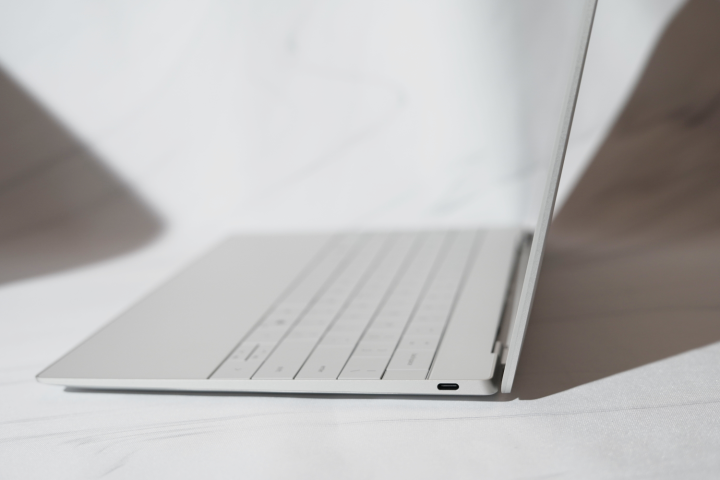
Both laptops are highly portable, with the MacBook Air being thinner and the XPS 13 being slighter smaller. Neither will weigh down a backpack.
However, the MacBook Air M3 gets excellent battery life that’s among the best you’ll find in a 13-inch laptop. Both XPS 13 models get much better battery life than previous generations, especially running lighter tasks.
Ultimately, the MacBook Air M3 is more efficient across the board.
| Web | Video | Cinebench R24 |
|
| Dell XPS 13 (9345) (Qualcomm Snapdragon X Elite X1P-80-100) |
12 hours, 29 minutes | 22 hours, 9 minutes | 1 hour, 37 minutes |
| Dell XPS 13 (9350) (Core Ultra 7 258V / Intel Arc 140V) |
13 hours, 33 minutes | 24 hours, 52 minutes | 2 hour, 24 minutes |
| Apple MacBook Air M3 (M3 8/10) |
19 hours, 38 minutes | 19 hours, 39 minutes | 3 hours, 27 minutes |
The MacBook Air M3 wins out, but the margin is smaller
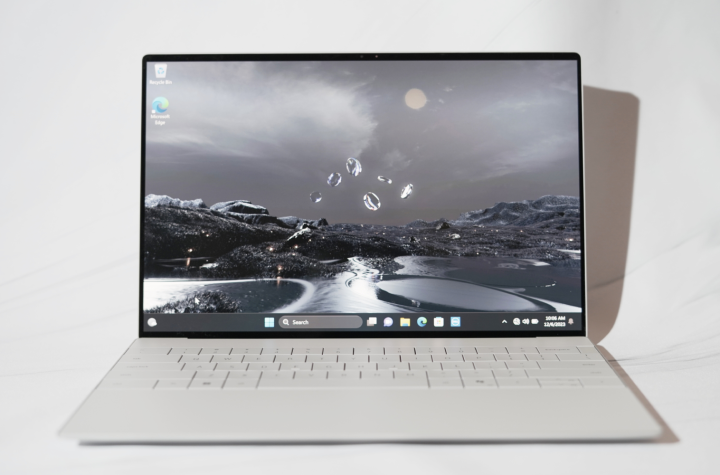
The XPS 13 is a very well-built and highly portable laptop, and with its newest chipsets it also gets much better battery life than before. The keyboard, touchpad, and LED function keys are of questionable value other than looking cool. But it’s certainly beautiful.
The MacBook Air M3 is a bit faster and gets even better battery life. Its robust chassis is also great looking and its keyboard and touchpad are the best available on laptops today. It wins this battle, although by less than in previous generations.



